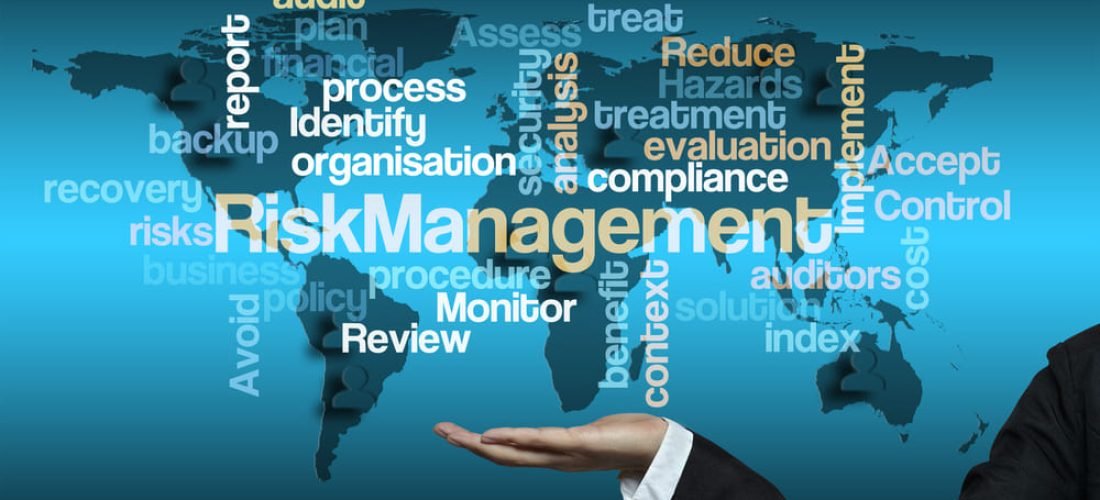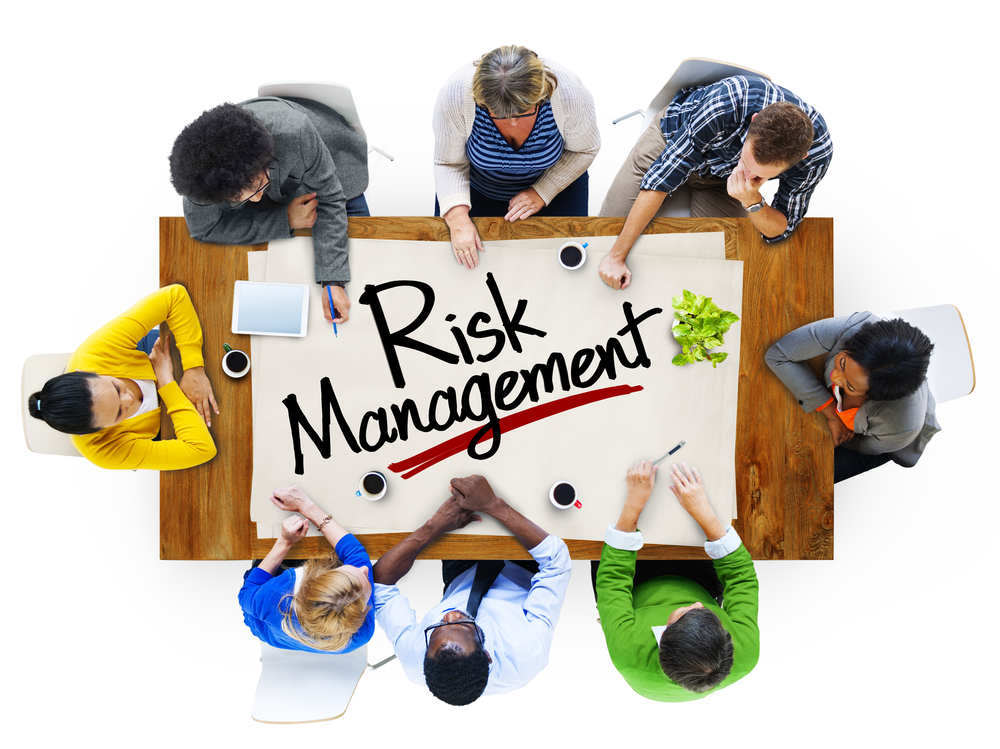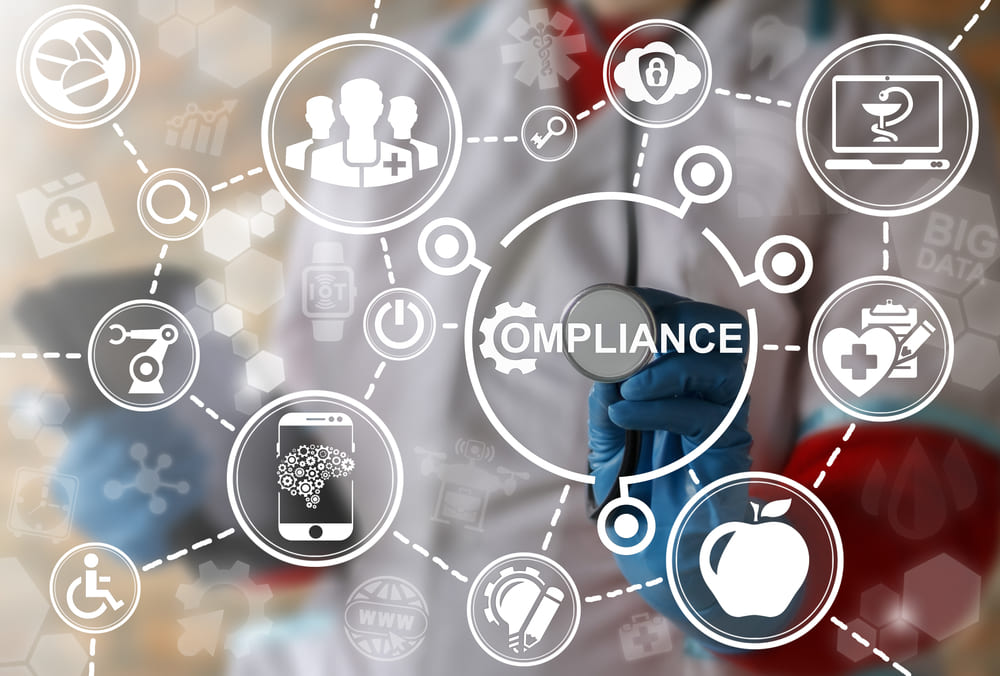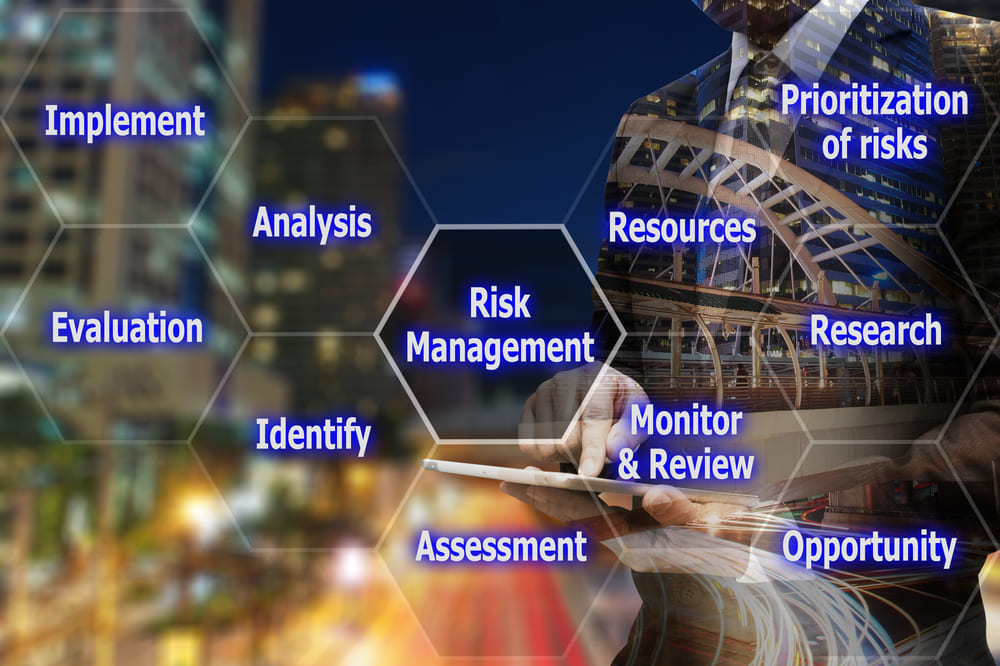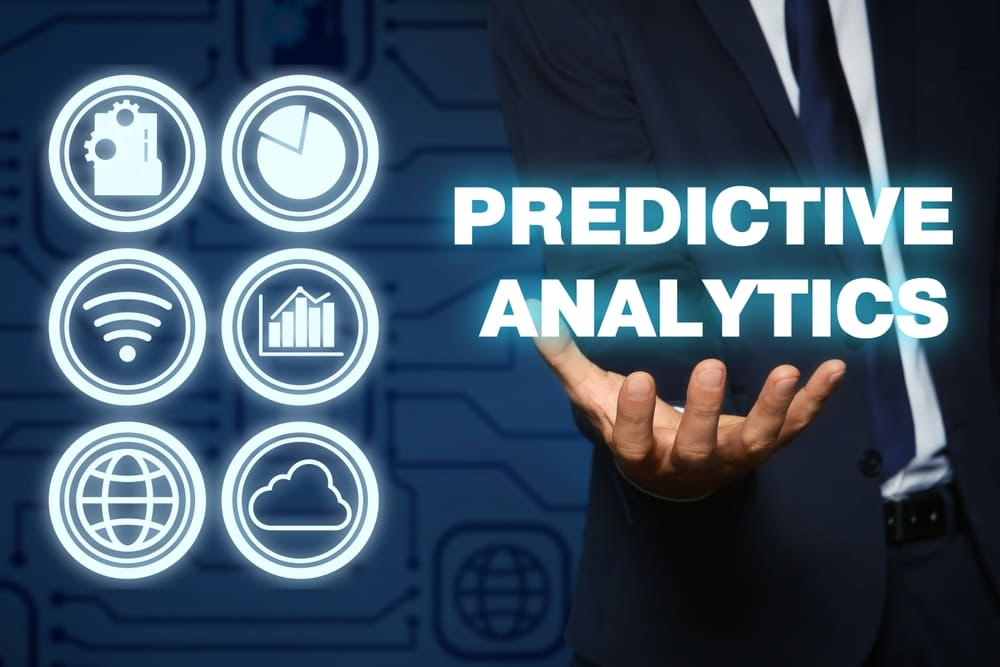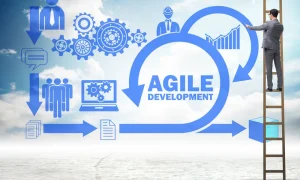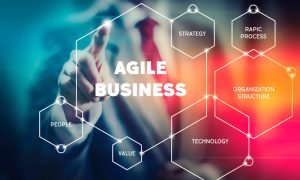Are you looking to fortify your enterprise against risk in today’s unpredictable business landscape? The risk management best practices offer a strategic roadmap to do just that. Here, we cut through the noise to present straightforward, actionable risk management strategies—from risk culture refinement to leveraging technology for robust defenses. Get ready for a concise exploration of topline risk management tactics that directly affect organizational resilience and success.
Key Takeaways
- Establishing a strong company’s risk culture, defined by the values, beliefs, and attitudes about risks, is foundational for effective risk management. This culture, led by the tone from the top and supported through employee education, emphasizes the responsibility of management and the board of directors to communicate and set the tone for compliance with risk management practices.
- The risk management process involves identifying and assessing risks using techniques and tools like SWOT, PESTLE, actuarial tables, and ISO-31000 principles to prioritize risks based on likelihood and impact.
- Risk management strategies must be developed and implemented, including risk response options, treatment plans, and leveraging technology like risk management software and data analytics to monitor, review, and adjust to the dynamic risk environment.
Establishing a Strong Risk Culture
The risk culture of a company is the blueprint of all decisions made. It involves common values, objectives, behaviors, and perception of risks among people within a company. A good risk culture encourages a high level of transparency, knowledge sharing, and continuous improvement while also maintaining an ethical and responsible corporate behavior.
A properly developed risk-aware culture is critical to our success in the management of risks through our software product. It also ensures an active approach to the identification and resolution of any potential threats or uncertainties enabling secure ways ahead. This is why it is important to create awareness about the potential hazards for the efficient operation of our organization’s management system.
The identification of awareness as a crucial element of the robust risk culture is significant in supporting the proactive risk detection and management throughout the organization.
In general, the power of an enterprise depends on how much its risk-oriented culture is developed. It prompts employees to recognize any potential hazards in advance rather than retrospectively and deal with them effectively. By focusing on this action, the resource management is simplified and the best productivity from both people and technology is obtained. Therefore, we place insurance and risk management at the heart of our operations.
Tone from the Top
There is a great importance of leadership in influencing enterprise risk culture. The attitude and communication shown by executive management and the board lead the entire organization in its approach towards risk management and compliance. Top management should actively promote their desired risk culture by demonstrating consistent supportive actions and celebrating the worth of effective risk management efforts.
Regardless whether it concerns the synergy between value creation and potential risks prevention, or deeply established corporate culture of the attitude towards risks management communication, the responsibility falls on the top management to show the way for the adherence from within the organization. This balance is an example of a positive and desired risk culture of any successful business model.
Further Reading: Risk Management: Ultimate Guide to Navigating Uncertainties
Employee Education and Training
Risk management is a significant duty of organizational leaders, although it should not be entirely left to them. The employees are the lifeblood of any organization and should also have the ability to effectively manage the risks by education.
Risk management training helps employees detect the occurrence of possible dangers, prevent losses, participate in planning and evaluation procedures and develop successful strategies for risk management. Such thinking should be prevalent in all layers of the workforce to sensitively identify and notify about the potential risks in advance.
Risk management training is the way companies show their responsibility to ensure the safety of their operations, employees, and their customers as well as develop employee engagement and empowerment.
Identifying and Assessing Risks
Through our robust risk culture, we can adequately deal with what is coming in our way as far as risks are concerned. Detection and assessment of risks is an important part of this procedure. The ERM approach of our organization enables us to be proactive and identify and understand all possible threats throughout the organization, including the important component of financial risk.
Therefore, knowing the financial risk within the framework of enterprise risk management and strategic planning is fundamental as it goes beyond the classical risk management approach by assimilating risk into business goals and strategy measurement. This collaborative, cross-functional effort helps to make sure that financial risk is not managed in silos, but becomes an essential part of our overall enterprise strategy and performance.
For consistency of communication across the organization, set policies of risk management have been developed with defined roles, responsibilities and mitigation procedures.
Just as significant as the importance of identifying these potential hazards is prioritizing them within a business context and identifying areas critical to our success. This gives us a structure to determine the criteria of rating the various degrees of risk involved.
Risk Assessment
We assess each identified threat based on its likelihood and impact in order of their prioritization guided by some of the industry best practices of risk management such as those that are outlined in the nine core principles of ISO-31000. Even though the whole process is rather rigorous and all time overlook, the main effort during it is rather on how the negative impacts they can generate both on organizational goal and overall performance can be mitigated.
And so making a vital underpinning of achieving operational excellence at every level of our organization that has been efficient in handling, resolving, and preventing strategies for current or future problems which will finally lead to more value. This in turns, makes it a lot easier to engage the employees since their individual efforts works even more closely connected with the desired goal, thus integrates better many decision-making instances especially when resources need to be assigned accurately to avoid waste.
Risk management processes play a critical role in identification of strengths, weaknesses, opportunities, and threats, which ensures that stakeholders take on a comprehensive approach to managing the full spectrum of risk.
Risk Identification Techniques
Effective risk identification is more than just identification of visible threats. The use of structured analytical techniques such as SWOT analysis and PESTLE analysis is important to capture the different risks that can affect an organization. An RB star also helps in categorizing risks in major categories so that they are identified more easily.
Further Reading: The Ultimate Guide To Conducting A SWOT Analysis: Uncover Your Competitive Edge
In order to identify risks in a comprehensive manner, all facets of an organization have to be analyzed, including operations, vulnerabilities, asset protection, and potential disruptions. The risks of location such as natural calamities or urban development should also be noticed. The “what-if” scenarios can be good trials to analyze different consequences of possible positives or negatives.
Compliance to the definition of AICPA (American Institute of Certified Public Accountants) would supply organizations with a clear vision of risk management that in its turn would serve as a good base for effective identification of risks.
Risk Assessment Methods
The risk assessment is another crucial step that follows risk identification. This includes rating risks according to their likelihood, from very high to very low. Risk analysis considers both qualitative and quantitative aspects including estimated economic impact to assess probability of occurrence.
To rank risks by the probability and financial consequences, actuarial tables are used for statistical assessment. An impact matrix and complexity levels are utilized in risk treatment plans to provide numerical values for both factors: likelihood and impact allowing for quick prioritization during assessment.
Developing and Implementing Risk Management Strategies
Risk management is very important for all organizations as it involves the entire procedure of identification, assessment, response to and monitoring of risks. It runs on a continual loop which complies to standard like ISO-31000 which defines the scope, context and criteria for a specified risk management process. This involves employing a risk register to control the identified risks.
The objective of the proper risk management program is maintaining and increasing the total enterprise value through the right management of threats. When risk management is aligned with organizational strategy and proactive action is taken to assess all forms of risks, including new and emerging threats, organizations will attain operational excellence and ensure the protection of their assets, business sustainability, and in the end achieve their organizational objectives.
In general, risk management is a strong tool in cutting missteps in an organization, saving a lot of resources in the form of money, time, and effort. Through identification, the ISO-31000 rules, the implementation of processes, such as the use of the computer.
Risk Response Options
In regard to risk response, organization have a whole range of strategies. One of those strategies is risk avoidance, which is designed to eliminate the risk or at least reduce its impact by making changes in business practices or by refusing certain projects. Conversely, risk management activities may manifest themselves in various ways depending on the nature of the risk, in this case, from installing fire alarms for physical risks to dealing with workplace substance abuse for human-related ones.
Acceptance might be chosen as a strategy of dealing with risks in those cases where either tolerable potential damage or excessive costs of mitigation in comparison to the possible losses are determined. This means that the organization has to actively sustain consciousness and control of the accepted risks within its operations. Transference is another option in which businesses transfer the responsibility of managing identified risks to third parties through insurance policies that are formulated to cover different types of business related hazards.
Risk Treatment Plans
Having selected a risk response option, it is important to implement a suitable risk treatment plan. These plans are crucial in addressing individual risks and facilitating the success and profitability of the organization in the long run.
An integrated risk treatment plan source out specific risk treatment strategies, actions, and controls and identifies the responsible parties, timelines and budgets for each selected treatment method. This avoids ambiguity and provides for accountability among management.
The procedure includes choosing the appropriate options of the risk management and constant estimation of their work in the situation of the risk. Risk avoidance is a very important approach to this process, which may involve staff training programs, safety checks or maintenance protocols for equipment, and regular insurance reviews as part of the organization’s overall approach to risk management practices as stated by the Risk Treatment Plan.
Continuous Risk Monitoring and Review
Our path demands us to continuously monitor and review our risks. It encompasses monitoring the implementation of risk management measures and identification of new risks. Continuous risk monitoring will also let us know that the mitigation we’ve done is working and effective thus allowing us to adapt to the changes quickly.
Effective monitoring affords the opportunity to get new and relevant information, which consequently makes the risk management actions more efficient. It allows organizations to instantly establish the efficiency of risk controls and to rectify if anything unplanned occurs, adding value to the risk mitigation investments. It also helps in risk prioritization and resource distribution which in turn supports decision making.
Further Reading: Unlock The Power Of Risk Handling: Expert Insights
Data analytics plays a vital role in detection of emerging risk by through the analysis of data to highlight key risk indicators as a part of continuous monitoring.
Key Performance Indicators (KPIs)
Evaluation of our risk management procedures efficiency is an important part of performance measurement. Key Performance Indicators (KPIs) and Key Risk Indicators (KRIs) are essential measures that evaluate the risks and the manner in which a company consistently meets its business objectives.
Effective KPIs for managing risk include:
- The frequency at which we conduct risk assessments.
- The speed at which we respond to identified risks.
- The decrease in impact caused by known risks.
- A comparative analysis between identified and mitigated versus realized risks.
Such actions afford important landmarks to evaluate the effectiveness of our risk management approach. it aids us to rank high risk financial threats, track all identified threats, access the cost that would be involved in implementing relevant strategies, thereby, achieving financial advantages for the organization.
Monitoring known potential hazards through addressing high-level financial threats facilitate measurement of the progress in achieving the set goals of efficient threat mitigation in any operation or practice performed by each team member part if his/her daily routine while conducting any duties assigned to him.
Regular Risk Reviews
Similar to a tightrope walker who continuously adjusts their balance, businesses have to frequently reassess their risks. These risk revaluations do not only reflect on the current risks, but they likewise reveal any emerging ones, which lay the basis for the continual risk monitoring.
Regular risk reviews offer the chance to improve and modify risk management strategies and controls. This enables continuous improvement that is information based. Conducting such assessments every other time, minimizes the chances of the risk management initiatives being out of sync with both the evolving threat landscape and organizational objectives.
Leveraging Technology and Data Analysis
We can take advantage of the continuous development of innovation through technology to help us through the many pitfalls of risk. Through the usage of integrated risk management software, collaboration and visibility are improved, thus, making risk management programs more effective. By automating the constant risks management process, organizations are able to increase their risk detection and response capabilities, as well as to further understand the current risks and ways of how they should be solved.
Data analysis is important in detection of the possible threats and in developing tactics that help in proper monitoring, responding and re-evaluating them within the organization’s general management system.
Risk Management Software
Risk management software is a useful instrument in perfecting our risk management efforts. It offers a lot of benefits, i.e., automation of tasks, and simplification of processes, which finally raises the efficiency of the risk management teams. It also enhances risk identification through features like loss-intake portals and anonymous reporting systems, enabling continuous assessment.
This software provides ‘real-time’ dashboards and reports which allow organizations to watch their current risk landscape closely. Through the enhancement of compliance management functionalities, companies can keep abreast with regulatory and industry standards.
Before integrating risk management software into the system of an organization, some key aspects to consider includes learning curve to understand how the software works, resolving possible technical issues prior to integration and having minimum customization options installed incase asked for.
Also, making sure there is strong data security measures in place before the installation to ensure more effective use. When these aspects are appropriately in place, it becomes easier to enjoy the many benefits that come with using quality risk management software for effective practices. In the end, it enables to identify all important keywords under the risk factors.
Data Analytics and AI
The digitalized age has brought to the forefront the enormous worth of data. Within the scope of risk management, data analytics covers the process of analysis of large datasets to detect, evaluate, predict and handle potential risks within an organization. The primary sources used for this are historical records, external databases and real-time data to identify patterns and trends that may pose a threat.
Data visualization tools, machine learning algorithms, and other tools that are used in data analytics are all essential in risk management with data analytics. The use cases vary from detection and evaluation of different types of risks within an entity, with their appropriate prioritization as well. Going Through the demonstration of ways to minimize those known threats together with the establishment of ongoing monitoring practices thereafter.
Using this approach, decision makers will realize various benefits including informed decision making based on the analyzed results, leading to opportunities in costs saving, advanced fraud detection techniques, employed upon earlier identification as well as measures taken to mitigate any detected discrepancies.
For organizations looking to implement effective risk management strategies using data analytics methods:
- Business objectives must first be clearly defined;
- Data needs gathering then classification tasks implemented subsequently followed immediately by carrying out analysis exercises;
- Results interpretation shall follow allowing decision-makers will need interpret meaningful insights which inevitably necessitate taking concrete action at every point where necessary;
- Active post-analysis assessments must be conducted on a regular basis in order to ensure a systematic approach to the oversight processes that require it- thereby allowing timely interventions in order to prevent potential harm from occurring.
Involving Stakeholders in Risk Management
Risk management is a collective process that requires involvement of all stakeholders. This guarantees that everything concerning business and risk management is covered in the process. With the aim of creating an efficient risk management framework, this task can be assigned to different people or departments within a company who have the right skills and resources for such a task, such as risk management committees, audit teams, project managers, risk assessment and external consultants.
Engagement of stakeholders in the decision-making process facilitates continuous risk monitoring by offering the latest details that support efficient risk management actions. The parties involved in the development of strategies for managing the possible hazards at each level within an organization are influenced by factors such as the organizational structure and resource availability.
Inputs from various angles also promote the constant assessment of potential dangers through continuous monitoring carried out with the help of new inputs from major players representing different parts of an organization’s operation. Therefore involving stakeholders not only provides broader representation but also improves overall effectiveness in particularly identifying vulnerabilities before they grow into bigger problems potentially.
Cross-functional Collaboration
Cross-functional teamwork is important in the efficiency of risk management approaches. It serves as a control mechanism through elimination of risks with regards to cross-functional and cross-level interactions and interdependencies in an organization. Some of such cross-functional risks are the lack of convergence of goals, breakdown in communication, differences in interests or standards, gaps in roles and responsibilities, and cultural diversity.
Being proactive and finding potential risks means getting help in and out so that all security vulnerabilities and failed processes can be discovered before they result in undesirable outcomes for the organization.
Engaging External Stakeholders
The external stakeholders have many benefits when included in risk management. One of them is understanding potential threat better. By engaging these stakeholders in the decision-making process, trust between the organization and the stakeholders is also enhanced. Having inputs from diverse angles on the hazard makes the management a more comprehensive one.
External party collaboration diversities bring a wealth of ideas that improve the efficacy and scope of the risk management process.
Engaging different external stakeholders as they give feedback at differ stages of this process assures wide range of perspectives that naturally lead to informed decisions. These stakeholder groups’ participation and inputs encourage understanding and make it possible for shared responsibility when dealing with adverse events related to those identified risks.
Summary
Risk management is a sophisticated tightrope that should be policed by multitudinous approach. Every process remains on purpose, which includes the strong risk culture development and usage of the most advanced cutting-edge technology and data analysis. Participation of stakeholders in risk management is not only multifaceted but also fosters collective decision making.
Risk management is a live system, rather than a single operation. It is important to ensure that we stay focused and that we are proactive in identifying possible risks and developing ways to take care of them. By the proper strategic application, for example, regular risk assessment or timely-response action plans, we may sail a safely in void and challenging areas.
By deploying cutting-edge tools like predictive analytics and scenario planning we will know what risks to anticipate and act accordingly in a timely manner. Such a proactive behavior does not only eliminate the danger of possible losses but also introduces the employee awareness within the organization.
The risk management process is always threatened by failure; however, with the right determination and support structures, we will manage to not only maintain our balance but also move ahead with our organizational goals. The proactive approach and the risk-aware culture are the two most important things to be successful in the field of risk management in the modern business world.
Frequently Asked Questions
What are 5 risk management practices?
Risk management involves a five-step process of identifying potential risks, assessing their severity and likelihood of occurrence, controlling measures to mitigate them, funding for handling unforeseen events arising from these risks, and monitoring the effectiveness of all risk management activities.
This systematic approach assists in minimizing costs.
What are the 5 principles of risk management?
Five basic principles of risk management are critical in guaranteeing proper and efficient control of risks within the organization. These involve integrity, development participation from the board, strategic risk positioning, strong risk culture, and reward for managing potential risks. All these elements lead to developing a successful risk management through different businesses.
How to manage risk?
In order to properly manage risks, it is important to adhere to the five steps of the risk management process: identification, assessment, analysis, implementation and monitoring, One will be able to identify potential hazards in their operational environment and choose the right action to address them by carefully applying these steps. The key purpose of this method is recognizing potential threats and learning how they may influence performance and applying a management technique, which will enable for continuous monitoring until rectified.
What is a risk culture and why is it important?
A risk culture is a uniform understanding of the risks among the members of an organization. This idea is very important as it fosters transparency, information sharing and improvement, and ethical and responsible business behavior in an organizational.
How are risks identified and assessed in an organization?
In an organization, structured analytical methods, like SWOT and PESTLE analysis, are employed in identifying potential risks. These hazards are than analyzed according to their probability of occurring and their severity. Using these approaches, the organization can develop the risk management strategies, which can control any kinds of potential threats to the organization’s objectives.

